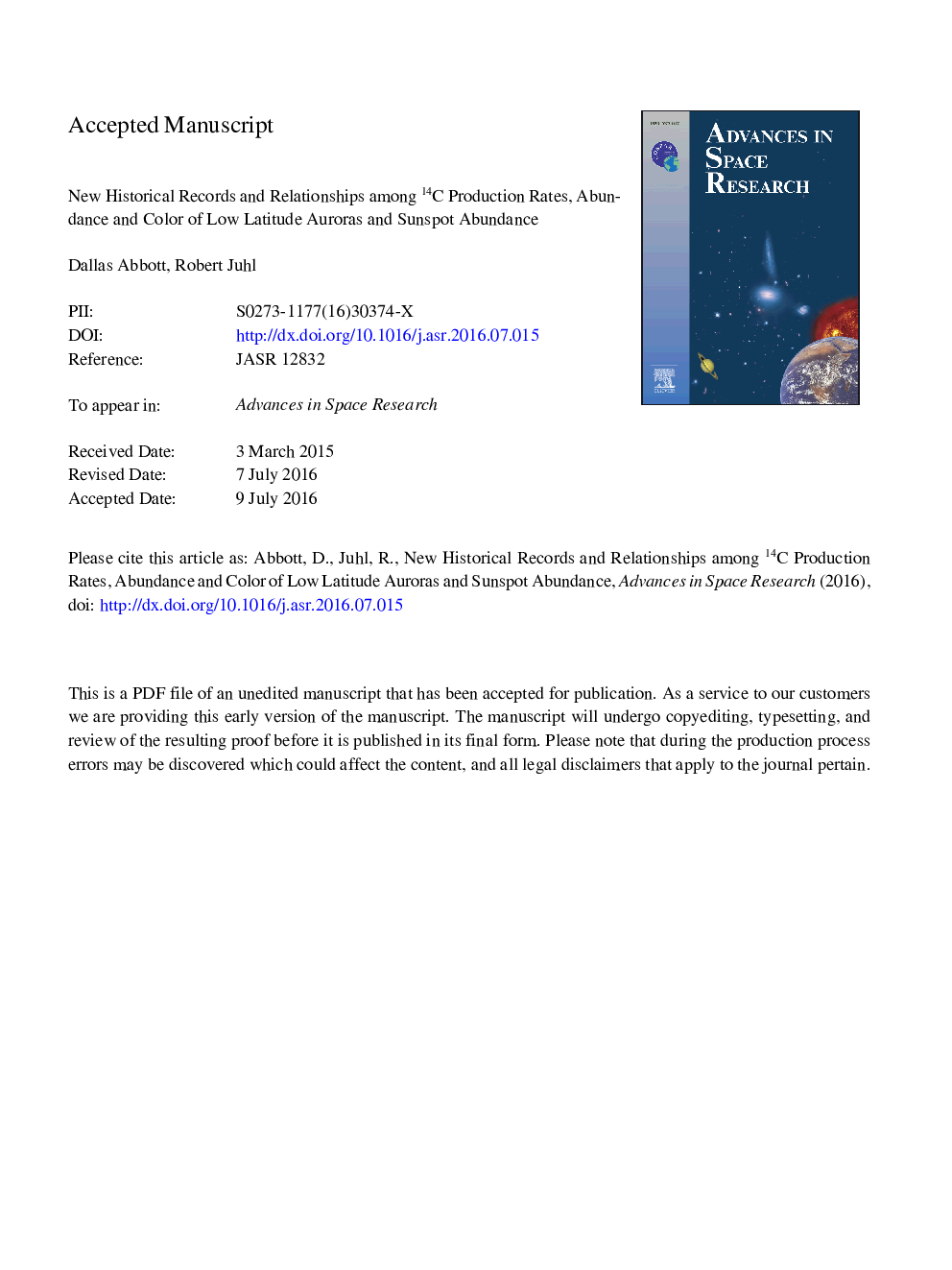| کد مقاله | کد نشریه | سال انتشار | مقاله انگلیسی | نسخه تمام متن |
|---|---|---|---|---|
| 5486800 | 1399484 | 2016 | 145 صفحه PDF | دانلود رایگان |
عنوان انگلیسی مقاله ISI
New historical records and relationships among 14C production rates, abundance and color of low latitude auroras and sunspot abundance
دانلود مقاله + سفارش ترجمه
دانلود مقاله ISI انگلیسی
رایگان برای ایرانیان
کلمات کلیدی
موضوعات مرتبط
مهندسی و علوم پایه
علوم زمین و سیارات
علوم فضا و نجوم
پیش نمایش صفحه اول مقاله

چکیده انگلیسی
Incursions of high-energy particles from space, specifically solar energetic particles and galactic cosmic rays, have significant effects on the Earth, including disruption of the Earth's magnetic field, generation of electric fields strong enough to damage electronic devices as well as the production of auroras at low-latitudes, within 45° of the magnetic equator. We examine the relationships among 14C production, auroral abundance, auroral color and sunspot abundance using existing data supplemented by a new dataset. The new dataset, based on Chinese and Korean records from A.D. 1100-1700, includes 46 new or revised records of sunspots and 279 records of low-latitude auroras. Low-latitude auroras are predominantly red (66%, 835 events) with lesser proportions of white (20%, 253 events) and black auroras (6%, 67 events). All other auroral colors (green, yellow, multicolored, blue and purple) aggregate to a total of 100 events (8%). Overall, white auroras are more frequent during times of higher 14C production. We use two empirical methods of evaluating the flux of high-energy particles: modeled peaks and lows in 14C production and peaks and lows in the 14C calibration curve. We find that comparison to modeled 14C production gives significant results. White auroras are significantly more abundant (98% probability) at times of high production of 14C. Red auroras are somewhat more abundant (88% probability) at times of low production of 14C. The abundances of black, multicolored, green, yellow, and blue auroras between times of low and high 14C production are not significantly different. Violet/purple auroras are significantly more abundant (98% probability) at times of low 14C production. The positive correlation of violet/purple auroras with times of low14C production rate and the lack of correlation of blue auroras with times of high14C production is surprising, for this portion of the visible spectrum contains strong emission lines and some lines with high energies of excitation. Observations of emissions in the blue to violet part of the spectrum may be biased towards time periods when the atmosphere is exceptionally clear, as these colors are more difficult for the human eye to perceive.
ناشر
Database: Elsevier - ScienceDirect (ساینس دایرکت)
Journal: Advances in Space Research - Volume 58, Issue 11, 1 December 2016, Pages 2181-2246
Journal: Advances in Space Research - Volume 58, Issue 11, 1 December 2016, Pages 2181-2246
نویسندگان
Dallas Abbott, Robert Juhl,